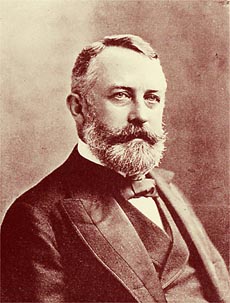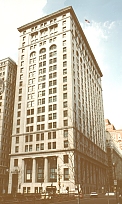History of Industrialist, Art Patron, and Philanthropist
Henry Clay Frick
(1849 to 1919)

Portrait of Henry Clay Frick, from the
Senator John Heinz Pittsburgh Regional History Center.
Authored By
Glenn A. Walsh, Informal Science Educator & Communicator
(For more than 50 years! - Since Monday Morning, 1972 June 12)
Sponsored By
Friends of the Zeiss
Electronic Mail: < frick@planetarium.cc >
(For more than 50 years! - Since Monday Morning, 1972 June 12)
Sponsored By Friends of the Zeiss
Electronic Mail: < frick@planetarium.cc >
Address of this Internet Web Site: < https://johnbrashear.tripod.com/frick.html >
Master Index for
History of Industrialist, Art Patron, and Philanthropist
Henry Clay Frick
